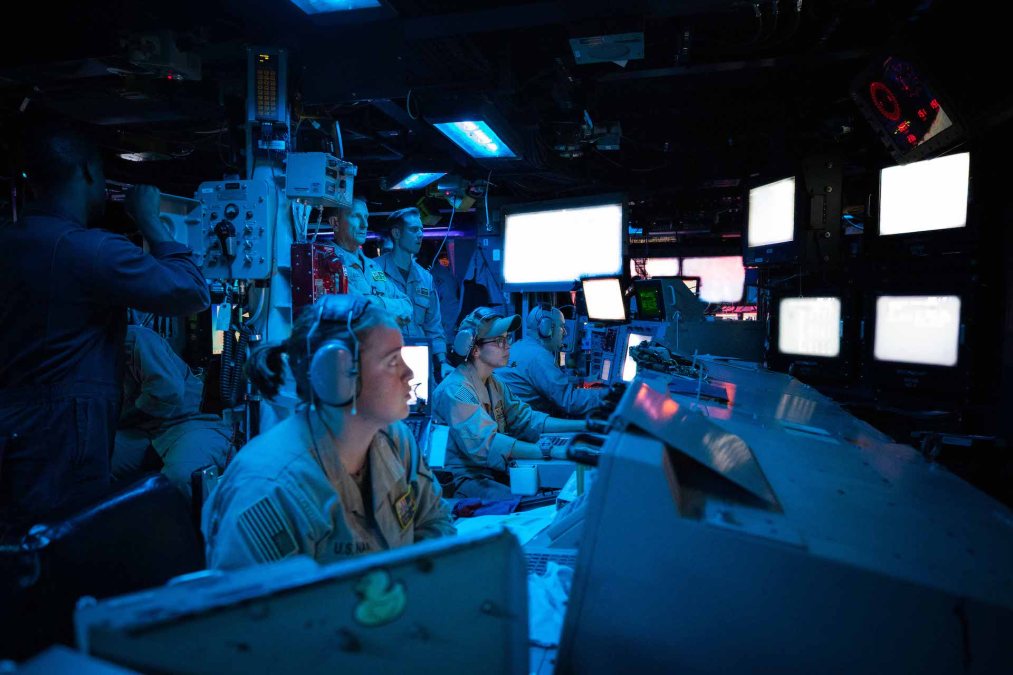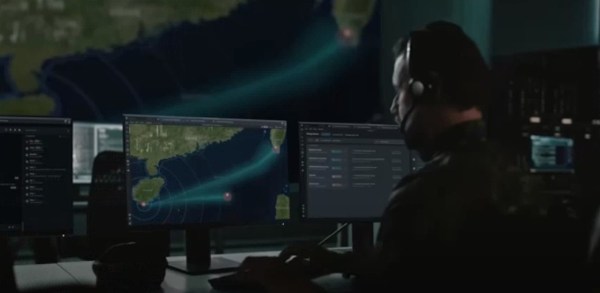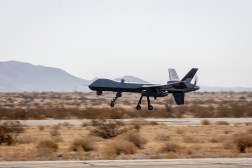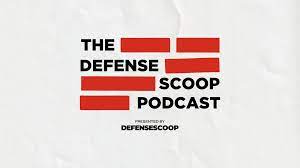Proliferation of sensors will make operating close to the enemy more challenging for US naval forces

SAN DIEGO, Calif. — Operating close to the enemy in the future will be harder than ever due to the proliferation of detection capabilities and other technologies, and the Navy and Marines are working on ways to overcome those difficulties.
While officials acknowledged operating inside the so-called weapons engagement zone, or WEZ, is not new, what is becoming more challenging is having to deal with advanced sensors to detect forces and weapons with longer ranges that push U.S. military units farther away from key objectives.
“Operating effectively in the WEZ,” Capt. Colin Corridan, deputy director of the Navy’s Disruptive Capabilities Office, said at the annual WEST conference this week when asked to identify the most challenging ops the Navy will have to perform in the future.
Other officials explained the importance of persistence to operating within those zones to have greater understanding of malicious activity and be better postured to counter it, if needed.
“We also need persistence. What I’m talking about here is persistent power projection and persistent domination of the battlespace, leading to denial of adversaries’ objectives. It means forces are able to execute prolonged operations against evolving threats, and our forces are able to operate within our adversaries weapon engagement zone,” Adm. Stephen Koehler commander of U.S. Pacific Fleet, said at the conference. “Operating forces within the range of enemy weapons, with the needed persistence to have an effect takes ingenuity, creativity in both tactics and equipment. That’s how we’re going to manage the inherent risk of those operations.”
The Marine Corps, part of the Department of the Navy, has articulated its concept of being the “stand-in force” for the military, which requires troops to already be present in theater near the enemy before crisis or conflict breaks out.
“We got to get the capabilities in the hands of the Marines where they can sense and make sense of the operating environment and really bring the concept of every Marine as a sensor, so that in the competition phase we have a good understanding of the battlespace — and should we have to go to high-end conflict, we really have a head start on understanding how the adversaries think and deconstructing that system,” Lt. Gen. Melvin “Jerry” Carter, deputy commandant for information, said in an interview at the conference. “It starts with persistent presence. As you know, for the commandant’s vision it is to develop the capabilities to ensure that the Marine Corps is not only that crisis response force, but as we look at the [Indo-Pacific Command] area, what we may have to face in the future, that inside force … in the weapons engagement zone, our goal as an institution, as the Marine Corps, is persistent presence inside the first and second island chain, preferably the first.”
Officials noted that the big changes to these types of ops are the range of enemy weapons, advanced technologies and sensors — and thus the need to increase the speed of decision to counter them.
There are roughly three broad buckets officials described when thinking about how to enable operations in the WEZ, both from an offensive and defensive perspective: counter-command, control, computers, communications, cyber, intelligence, surveillance, reconnaissance and targeting (C5ISRT), terminal defense and contested logistics.
Counter-C5ISRT is a top priority for the commander of Indo-Pacific Command, according to Rear Adm. Nicholas Homan, commander of Fleet Information Warfare Command – Pacific, who noted it’s also one of the five key pillars in the chief of naval operations’ priorities related to Project 33, part of the CNO’s Navigation Plan released last year to modernize the force quickly.
“Our task as information warfare professionals is to counter command, control, computing, communication, cyber, intelligence, surveillance, reconnaissance and targeting at scale, as it is this enabling capability that will bring victory in crisis and conflict versus our adversaries,” Homan said. “Without an effective C5ISRT system, military forces are essentially blind and unable to respond in a coordinated manner … To do this right, we will be required to integrate non-kinetic effects with kinetic effects at scale, something that has never been done but is absolutely doable. Our success in this arena will depend on integration of cutting-edge technology, robust evolving targeting strategies and perhaps most importantly, developing TTPs [tactics, techniques and procedures] and policy that enable our military, contractor and civilian personnel to innovate and evolve in real time.”
Officials also noted they’re learning a lot about terminal defense from military operations in the Red Sea against a barrage of missile and drone attacks launched by the Houthis — a group backed by Iran that controls portions of Yemen — in response to U.S. support for Israel’s war against Hamas. Lessons are related to both kinetic and non-kinetic capabilities.
From a contested logistics perspective, officials noted that the Navy and the other services must be able to sustain and resupply their forces while they’re being heavily targeted by high-tech adversaries such as China. This is an area where counter-C5ISRT will be mutually supportive.
Officials also articulated that in these contested environments, timelines will be accelerated and American forces must take advance of fleeting opportunities to execute effects.
Fighting from maritime operations centers will be a way to help coordinate these capabilities in a dynamic battlespace.
“In terms of bringing it all together and enabling it, we’re doing a lot of that from the MOC and then working at both the MOC level and then getting it down to the tactical end in terms of understanding the TTPs and [concept of operations] of the kit that we’re going to bring to bear to get after those three lines of effort,” Vice Adm. Michael Vernazza, commander of Naval Information Forces, told reporters.
For the Marines, they must have capabilities to allow them to be nimble, mobile and lethal in this dynamic operating space.
Carter said from a platform perspective, the Corps is looking at lighter systems that can more easily be moved from island to island in the Pacific, if needed.
“Heavy tanks, the capabilities of the past, the heavy armor, even the amphibious ships, they’re not going to cut it,” he said. “We are looking at, in terms of our platforms, something that is highly maneuverable and survivable.”
The service must apply technologies to those platforms to make them more stealthy and employ capabilities that allow forces to pass data back and forth quickly and securely.
“We have to give Marines the right capabilities and tools out there to not only sense the operating environment and how do you transmit … that information all the way back to decision makers that they can in the instant and make a decision, informed decision, get a targeting solution, and if you have to, identify and kill that thing very quickly,” Carter said.






